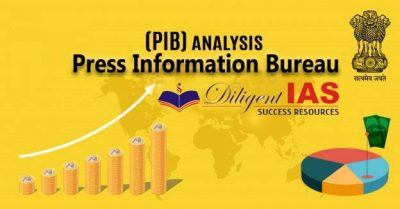Australia India Exercise 16/04/2019 – Posted in: Press Information Bureau
Australia India Exercise (AUSINDEX-19)
(Ministry of Defence)
WHAT
The Royal Australian Navy and Indian Navy have concluded a two-week long third bilateral maritime exercise code-named AUSINDEX.
OBJECTIVE
- The exercise seeks to ‘strengthen and enhance mutual cooperation and interoperability between both the navies.
- This edition would involve exercises in all three dimensions with focus on Anti-Submarine Warfare Systems (ASW).
- The exercise focuses on India’s vision of SAGAR (Security and Growth for All in the Region).
PREVIOUS EDITIONS
- First edition of the exercise was held in September 2015 at Visakhapatnam.
- Second edition of the exercise off Freemantle in June 2017, wherein ships of the Eastern Fleet of the Indian Navy (IN) exercised with Royal Australian Navy (RAN) ships and submarines.
Source: PIB
South west monsoon
(Ministry of Earth Science)
WHAT
Southwest monsoon seasonal (June to September) rainfall over the country as a whole is likely to be near normal.
By and large, the country is expected to have well distributed rainfall scenario during the 2019 monsoon season, which will be useful to farmers in the nation during the ensuing kharif season.
SUMMARY
- Monsoon seasonal (June to September) rainfall is likely to be 96% of the Long Period Average (LPA).
- The LPA of the season rainfall over the country as a whole for the period 1951-2000 is 89 cm.
- Weak El Niño conditions are likely to prevail during the monsoon season with reduced intensity in the later part of the season.
FORECAST ASSESSMENT
The sea surface temperature (SST) conditions over the Pacific (El Niño/La Niña) and Indian Oceans (Indian Ocean Dipole-IOD) which are known to have solid impact on Indian monsoon are by and large persistently observed.
BACKGROUND
- India Meteorological Department (IMD) issues operational forecast for the southwest monsoon season (June to September) rainfall for the country as a whole in two stages.
- The first stage forecast is issued in April and the second stage forecast is issued in June.
- These forecasts are prepared using state-of-the-art Statistical Ensemble Forecasting system (SEFS).
- Climate Forecasting System (CFS) model developed under Monsoon Mission of the Ministry of Earth Sciences.
SEFS model forecast uses the following predicators:
- The Sea Surface Temperature (SST) Gradient between North Atlantic and North Pacific.
- Equatorial South Indian Ocean SST
- East Asia Mean Sea Level Pressure
- Northwest Europe Land Surface Air Temperature
- Equatorial Pacific Warm Water Volume
SEA SURFACE TEMPERATURE
- Sea Surface Temperature (SST) is a measure of the energy due to the motion of molecules at the top layer of the ocean.
- Sea surface temperatures have a large influence on climate and weather. For example, every 3 to 7 years a wide swath of the Pacific Ocean along the equator warms by 2 to 3 degrees Celsius. This warming is a hallmark of the climate pattern El Niño, which changes rainfall patterns around the globe, causing heavy rainfall in the southern United States and severe drought in Australia, Indonesia, and southern Asia. On a smaller scale, ocean temperatures influence the development of tropical cyclones (hurricanes and typhoons), which draw energy from warm ocean waters to form and intensify.
STATISTICAL ENSEMBLE FORECASTING SYSTEM
- Ensemble Forecasting is a method used in numerical weather prediction. Instead of making a single forecast of the most likely weather, a set (or ensemble) of forecasts is produced.
- This set of forecasts aims to give an indication of the range of possible future states of the atmosphere.
INDIAN OCEAN DIPOLE
The Indian Ocean Dipole (IOD), otherwise called the Indian Niño, is an irregular oscillation of sea-surface temperatures in which the western Indian Ocean turns out to be alternately warmer and then colder than the eastern part of the ocean.
Source: PIB

